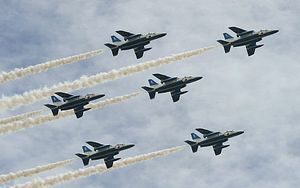How does Japan balance its avowedly pacifist constitution and its technologically sophisticated and growing Self-Defense Forces against rising regional threats? How do Japan’s neighbors, South Korea and China, in particular, view the rearming of Japan? And while Japanese Prime Minister Shinzo Abe is labeled a right-wing nationalist, what do the Japanese people think about shifting security trends and the future of the island’s defense?
Sheila Smith, senior fellow for Japan studies at the Council on Foreign Relations and author of the upcoming book Japan Rearmed: The Politics of Military Power, offers answers to some of these questions. Smith emphasizes that in developing its military capabilities Japan is responding to a complex regional situation and an uncertain future.
Japan’s post-war constitution enshrines pacifism with its renunciation of the use of force. The text of Article 9 also forswears maintaining “land, sea, and air forces, as well as other war potential.” In what ways has the Japanese interpretation of these restrictions evolved over time?
Early on, Japan’s political leaders established that the right of self-defense was inherent in the UN Charter and thus Japan, too, would be able to develop the capability to defend itself. This was established in the Diet committee that reviewed the draft of the U.S. Occupation authorities, and so the postwar debate that followed after Japan regained sovereignty in 1952 was how to interpret what was necessary for self-defense. Diet debate over the Self-Defense Forces (SDF) law in 1954 became the first place this was deliberated, and many of the basic issues Japanese still consider were raised then. But over time, as the SDF developed the capability to take over territorial defense missions from U.S. forces, debate blossomed into what sorts of things should define the military capability of the SDF. Over time, these debates shifted focus from what kinds of weapons were acceptable to what kind of missions the SDF could perform, and then to the possibility of SDF participation in international coalitions in the post-Cold War era (such as UN Peacekeeping Operations and post-9/11 U.S. coalitions in the Indian Ocean and now in the South China Sea). I trace this trajectory of deliberations in Japan Rearmed to show just how far Japan has come in thinking about the utility of its military as a partner in regional and global security.

































